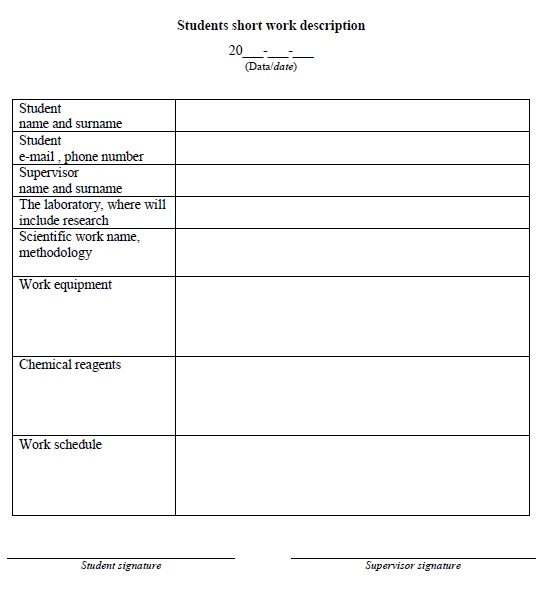Environmental Engineering
Departments
Department of Environmental Protection and Water Engineering
Laboratories
Laboratory of Water Engineering
Have any questions?
Please contact us
Phone +370 5 274 4714
E-mail crypt:PGEgaHJlZj0ibWFpbHRvOnRvbWFzLnplbWFpdGlzQHZpbG5pdXN0ZWNoLmx0Ij50b21hcy56ZW1haXRpc0B2aWxuaXVzdGVjaC5sdDwvYT4=:xx
Tomas Žemaitis
Head of Laboratory(ies)
SRA-II 210
Phone +370 5 274 4714
Email crypt:PGEgaHJlZj0ibWFpbHRvOnRvbWFzLnplbWFpdGlzQHZndHUubHQiIHRpdGxlPSJ0b21hcy56ZW1haXRpc0B2Z3R1Lmx0Ij50b21hcy56ZW1haXRpc0B2aWxuaXVzdGVjaC5sdDwvYT4=:xx
Map
Head of Laboratory(ies)
SRA-II 210
Phone +370 5 274 4714
Email crypt:PGEgaHJlZj0ibWFpbHRvOnRvbWFzLnplbWFpdGlzQHZndHUubHQiIHRpdGxlPSJ0b21hcy56ZW1haXRpc0B2Z3R1Lmx0Ij50b21hcy56ZW1haXRpc0B2aWxuaXVzdGVjaC5sdDwvYT4=:xx
Environmental Protection cathedral laboratories:
- Environmental Chemistry (founded 1992 year., teaching);
- The physical environment (founded in 2000year., teaching);
- Environmental Technology (founded in 2006 year., teaching);
- Aerosols and air treatment (founded in 1993 year., scientific).
Tomas Žemaitis
Head of Laboratory(ies)
SRA-II 210
Phone +370 5 274 4714
Email crypt:PGEgaHJlZj0ibWFpbHRvOnRvbWFzLnplbWFpdGlzQHZndHUubHQiIHRpdGxlPSJ0b21hcy56ZW1haXRpc0B2Z3R1Lmx0Ij50b21hcy56ZW1haXRpc0B2aWxuaXVzdGVjaC5sdDwvYT4=:xx
Head of Laboratory(ies)
SRA-II 210
Phone +370 5 274 4714
Email crypt:PGEgaHJlZj0ibWFpbHRvOnRvbWFzLnplbWFpdGlzQHZndHUubHQiIHRpdGxlPSJ0b21hcy56ZW1haXRpc0B2Z3R1Lmx0Ij50b21hcy56ZW1haXRpc0B2aWxuaXVzdGVjaC5sdDwvYT4=:xx
Kamilė Ryliškytė
Technician
SRA-II 2005
Phone +370 5 274 47 14
Email crypt:a2FtaWxlLnJ5bGlza3l0ZUB2aWxuaXVzdGVjaC5sdA==:xx
Map
Technician
SRA-II 2005
Phone +370 5 274 47 14
Email crypt:a2FtaWxlLnJ5bGlza3l0ZUB2aWxuaXVzdGVjaC5sdA==:xx
For the purpose to go deeply into theoretical course of liquid mechanics, students supervised by teachers and laboratory manager, perform laboratory works. According to chosen speciality, 3 or 5 laboratory works are perormed: Bernoulli‘s equation, frictional losses, local losses, steady and unsteady fluid flows from outlets and tips.
Regimes of laminar and turbulent liquid flows are demonstrated by Reynolds apparatus and volumetric flow rates of liquid are measured with fluid flow meter using various approaches.
Regimes of laminar and turbulent liquid flows are demonstrated by Reynolds apparatus and volumetric flow rates of liquid are measured with fluid flow meter using various approaches.
Tomas Žemaitis
Head of Laboratory(ies)
SRA-II 210
Phone +370 5 274 4714
Email crypt:PGEgaHJlZj0ibWFpbHRvOnRvbWFzLnplbWFpdGlzQHZndHUubHQiIHRpdGxlPSJ0b21hcy56ZW1haXRpc0B2Z3R1Lmx0Ij50b21hcy56ZW1haXRpc0B2aWxuaXVzdGVjaC5sdDwvYT4=:xx
Head of Laboratory(ies)
SRA-II 210
Phone +370 5 274 4714
Email crypt:PGEgaHJlZj0ibWFpbHRvOnRvbWFzLnplbWFpdGlzQHZndHUubHQiIHRpdGxlPSJ0b21hcy56ZW1haXRpc0B2Z3R1Lmx0Ij50b21hcy56ZW1haXRpc0B2aWxuaXVzdGVjaC5sdDwvYT4=:xx
Silvija Bulatovaitė
Technician
SRK-II 310
Phone +370 5 274 47 24
Email crypt:c2lsdmlqYS5idWxhdG92YWl0ZUB2aWxuaXVzdGVjaC5sdA==:xx
Olga Khrystoslavenko
Technician
SRK-II 310
Phone +370 5 274 47 24
Email crypt:b2xnYS5raHJ5c3Rvc2xhdmVua29Admlsbml1c3RlY2gubHQ=:xx
Map
Technician
SRK-II 310
Phone +370 5 274 47 24
Email crypt:c2lsdmlqYS5idWxhdG92YWl0ZUB2aWxuaXVzdGVjaC5sdA==:xx
Olga Khrystoslavenko
Technician
SRK-II 310
Phone +370 5 274 47 24
Email crypt:b2xnYS5raHJ5c3Rvc2xhdmVua29Admlsbml1c3RlY2gubHQ=:xx
The Department has two laboratories: Water Management training lab (up to 20 workplaces) and Water Chemistry lab (up to 8 workplaces). The labs are quipped with 11 experimental benches used by the students during their laboratory works, including sedimentation bench, hydraulic impact monitoring bench, benches for water-treatment units for open systems (two), wastewater treatment plant models (three), biological decay sewage sludge bench, bench for insertion and refinery of petroleum products, airlift simulator, pressure water filtration system.
During laboratory works with wastewater treatment technologies, students with major in Water Management investigate and analyse the following: suspended solid concentrations, sedimentation kinetics, biochemical oxygen consumption in 7 days, concentrations of easily biodegradable organic pollutants, reagent doses for phosphorus removal from wastewater, optimal coagulant doses for sludge drying, sludge decay process performance.
During water-treatment laboratory works the students measure and analyse the following: granulometric composition of filling materials, sorbent capacity to remove organic pollutants, optimal coagulant dosage for flocculation using contact coagulation, technological performance of flocculation using filtration methods, reagent-free process of iron removal.
Water microbiology laboratory works include students’ microscopic examination of living organisms, natural water and sludge microflora. In addition, they measure activated sludge biocenosis, volume indicator, catalytic activation, bacterial concentration water, iron and manganese oxidising bacteria. Students’ laboratory works on pumps and pumping stations involve test determination of pump performance characteristics, analysis of various pump operational behaviours, measuring of hydraulic impact in the system, familiarisation with water management engineering equipment of the department, measurements in airlift simulator.
Laboratory works and trainings serve to get the students of the Environmental Protection Engineering programme familiar with various laboratory and engineering devices used in the areas of environmental engineering, including introduction of data storages and software: water leak noise detecting system, pressure sensors of various types, mobile pressure meter, inductive invasive flow meter, internal pipe diameter meter, mobile rainfall intensity meter, water level measuring equipment, thermostatic water baths, automatic titration unit, analytical scales, peristaltic pumps, chemical dispenser, spectrophotometers, distiller, thermo-reactor for determining COD, BOD thermostat, flocculent mixer, suspended solids determination unit, gas analysers, magnetic mixers, oximeters, pH-meters, conductometer, flow cabinet, trinocular microscopes equipped with image fixing option, sieves set, vacuum pump, automatic droppers, scales, gas chromatographer, spectrophotometer, etc.
During laboratory works with wastewater treatment technologies, students with major in Water Management investigate and analyse the following: suspended solid concentrations, sedimentation kinetics, biochemical oxygen consumption in 7 days, concentrations of easily biodegradable organic pollutants, reagent doses for phosphorus removal from wastewater, optimal coagulant doses for sludge drying, sludge decay process performance.
During water-treatment laboratory works the students measure and analyse the following: granulometric composition of filling materials, sorbent capacity to remove organic pollutants, optimal coagulant dosage for flocculation using contact coagulation, technological performance of flocculation using filtration methods, reagent-free process of iron removal.
Water microbiology laboratory works include students’ microscopic examination of living organisms, natural water and sludge microflora. In addition, they measure activated sludge biocenosis, volume indicator, catalytic activation, bacterial concentration water, iron and manganese oxidising bacteria. Students’ laboratory works on pumps and pumping stations involve test determination of pump performance characteristics, analysis of various pump operational behaviours, measuring of hydraulic impact in the system, familiarisation with water management engineering equipment of the department, measurements in airlift simulator.
Laboratory works and trainings serve to get the students of the Environmental Protection Engineering programme familiar with various laboratory and engineering devices used in the areas of environmental engineering, including introduction of data storages and software: water leak noise detecting system, pressure sensors of various types, mobile pressure meter, inductive invasive flow meter, internal pipe diameter meter, mobile rainfall intensity meter, water level measuring equipment, thermostatic water baths, automatic titration unit, analytical scales, peristaltic pumps, chemical dispenser, spectrophotometers, distiller, thermo-reactor for determining COD, BOD thermostat, flocculent mixer, suspended solids determination unit, gas analysers, magnetic mixers, oximeters, pH-meters, conductometer, flow cabinet, trinocular microscopes equipped with image fixing option, sieves set, vacuum pump, automatic droppers, scales, gas chromatographer, spectrophotometer, etc.
-
- Page administrators:
- Tomas Žemaitis
- Lina Damanskaitė
- Laura Ladietaitė
- Karolina Kardokaitė
- Ugnė Daraškevičiūtė


.jpg)
.jpg)
.jpg)
.jpg)
.jpg)
.jpg)
.jpg)
.jpg)
.jpg)
.jpg)
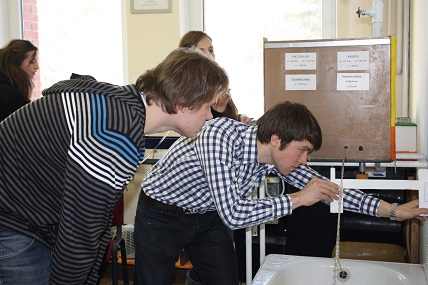
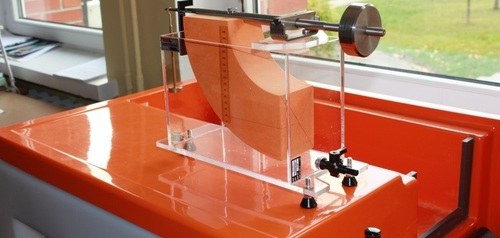
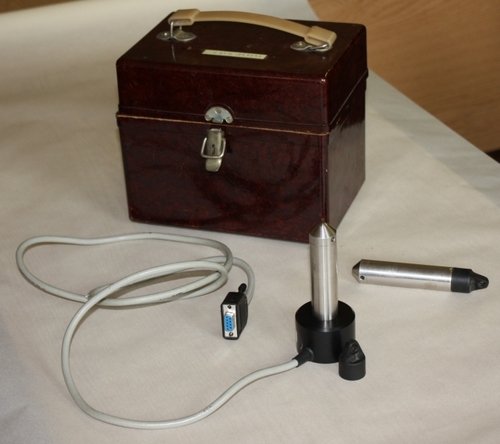
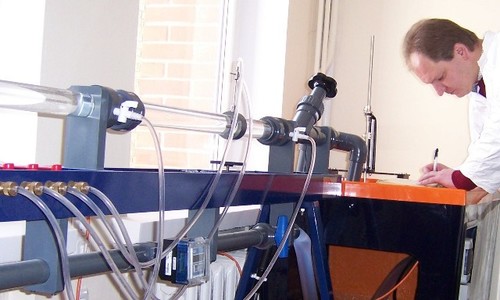

.jpg)
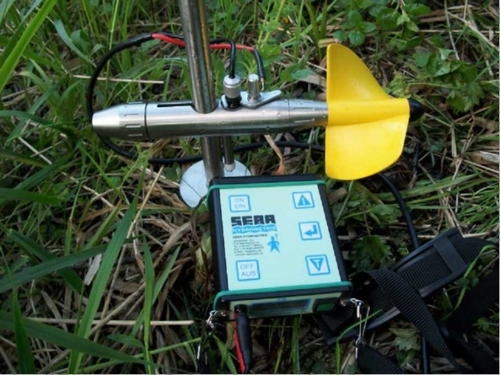
.jpg)
.jpg)
.jpg)


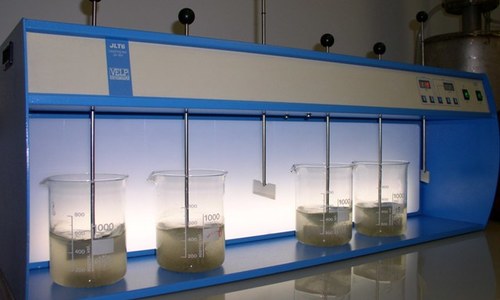
.jpg)
.jpg)
.jpg)
.jpg)
.jpg)
.jpg)
.jpg)
